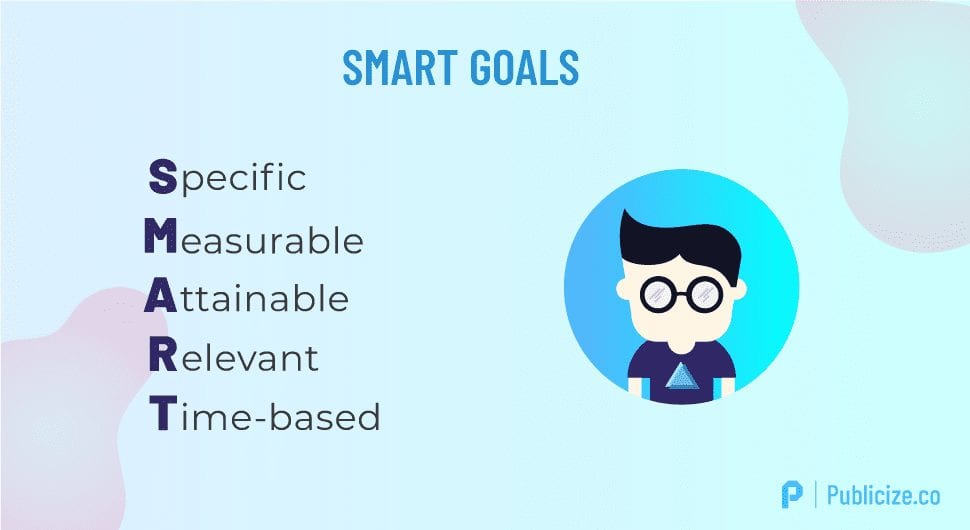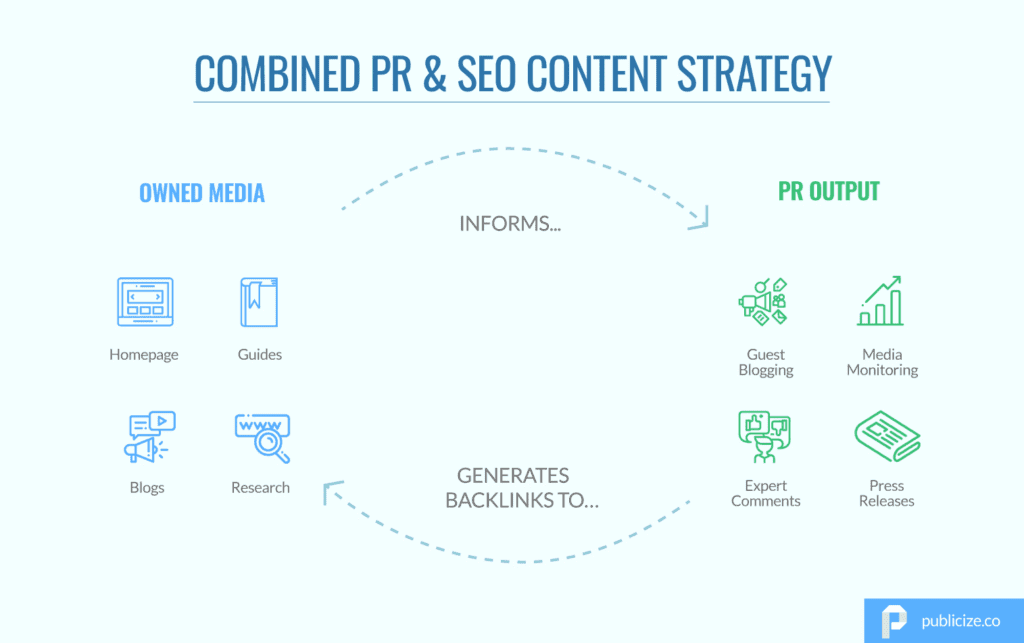Every year, tens of thousands of new products enter the market, and even the most promising of these fail to take flight.
According to research, only 40% of new products reach the market, while only 60% of these will generate a viable stream of revenue.
There is a tide of mantras for businesses to follow when taking a new product to market. Whether it’s Steve Jobs’ “Don’t sell products, sell dreams,” or David Ogilvy’s “Customers don’t buy products. They buy product benefits,” the point stays the same: Great product marketing is a subtle art that attracts people to buy at their own will, rather than being chased to do so. And the launch sets the tone for the success or failure of this.
From positioning to curating attractive content and planning out all launch activities, there’s a lot to consider when launching a new product. That’s why we’ve created this product launch marketing guide to show you the way.
1. Define your product launch marketing strategy beforehand
According to HBR, business leaders may have great confidence in their ability to develop innovations, but it’s the capacity to commercialize those that tends to lag behind. To get your go-to-market strategy right, it’s thus key to strategize and develop a comprehensive marketing plan for a new product launch.
Great products need great marketing. It’s as simple as that.
a. Have your product and target persona nailed down
Launching a new product can’t be a guessing game.
Bain analyzed successful launch leaders and found that they leverage advanced data aggregation and analytics tools to better understand their consumer communities. By paying attention to what their target audience is saying on social media, they’re 2.3 times more likely to understand their needs.
So, take your time to understand the needs of your users, their pain points and develop clear buyer personas from this information. The era of catch-all marketing is long gone, so if you want to engage a segment, make sure you’re speaking their language and tailoring your messaging accordingly.
Depending on your industry and focus, there are some of the things you want to look at:
For B2B:
- Firmographics (company size, industry, revenue)
- Role and job title of the specific decision-maker
- Pain-points and challenges
- Goals, motivations, and values
- Purchase factors and buying behaviors
For B2C:
- Demographics (age, location, language, occupation, income, etc.)
- Buying behaviors (social media usage, mobile presence)
- Hobbies and interests
- Pain-points and challenges
- Aspirations, motivations, and values
b. Tailor your product story
From hashtags to branding, your product launch needs to be delivered through a story that captivates your different stakeholders. This should always cover the 5Ws: Who, What, When, Where, and Why.
A good practice to get started with is creating a positioning statement that answers some of the key questions about the product. What is it called? Who is it for? What does it do, and how? What marketplace is it looking to enter? What are the values it conveys? How is it different from products that already exist? What’s the larger narrative that will help the product stand out?
After that, you can take it a step further. Take your positioning statement and compare it to your buyer personas. What story will help you win them over? What kind of messaging will best resonate with them? How should you adjust your positioning to best match their values and behaviors? By evaluating why they should make the buying decision and how the product can make their lives better, your narrative will be more bulletproof.
Daniela Restrepo, an Account Manager at Publicize, stresses the importance of creating and implementing strategies that trigger genuine opinions in target audiences. “Only these will lead to actions that result in conversations on social media and other platforms,” she says, highlighting the need for a solid product story.
While it’s important to have strong branding and guidelines for your product launch marketing, know that you don’t want to set anything in stone. If you need to change your messaging as you go, do it.
c. Set a launch plan with clear objectives
Not to scare you off, but go-to-market failures aren’t exactly uncommon. Delays, frantic, last-minute changes, or dysfunctional landing pages… it can all happen. To prevent this, make sure to have a clear plan with set timelines, responsibilities, and goals in place. For example, check out this great template Asana has designed specifically for product marketing.
This plan then gives direction to your team – some fundamental coordination that needs to happen for a successful launch. Not only should your whole company be on board with the launch, but also give their marketing input. For instance, your design team might have some different insights from your sales team when it comes to proving value in the eyes of your target audience.

2. Gain traction for your product launch online
It’s unlikely that all your buyer personas will hang out on the same digital platforms or will have the same trigger. So, take the compelling story that you’ve been cooking across your marketing channels, garnish with calls to action, and serve with clear information.
a. Curate your website
Imagine it’s launch day and the first batch of leads are landing on your website. The landing pages aren’t optimized for mobile, there are glitches and it takes ages to load. It’s a disaster, not just in terms of converting these initial prospects into clients, yet your overall brand reputation.
With that in mind, avoid putting a ceiling on your product launch success by optimizing your website for SEO.
In terms of page speed, website SaaS platformSEMRush has found that the optimal range is somewhere between one and two seconds. Making your website faster will need a look into the backend, but know that quick fixes include adjusting the image format or reducing the number of plugins.
Mobile usability is key too: While in 2016, mobile-only accounted for some 40% of daily usage time, desktop and mobile usage became even in 2019.
When it comes to the product page itself, experiment with an interface that’s engaging and allows users to personalize their experience. For example, let them customize the product or package according to their specific needs.
Still, the bottom line is always to present the information as clearly as possible, making sure that there are elements that inspire users to take action. Be it a promo magnet to build up your email list or an invitation to ask further questions in a live chat, calls to action are the core KPIs for evaluating product launch success.
Also, consider offering free trials or product demos. Apart from letting users try out the product by themselves, it can help you collect additional feedback and even customer testimonials you can then boast. That’s critical when you consider that 72% of customers won’t make a buying decision before reading a review.
b. Make media noise with a PR strategy
Unless you’re Apple or Microsoft, it’s unlikely that your launch will cause significant waves in the public sphere. Still, you can do proactive public relations outreach to spark important conversations and explain why anyone should care about your product in the first place.
First, know that press releases are definitely not dead. If you manage to present your product from a newsworthy perspective, they help garner interest and connect you with important media players. Journalists and reporters alike can then choose to broadcast your announcement and collaborate with you through guest articles or interviews. This process of building your digital footprint and overall media coverage will bolster awareness and credibility for your new product.
While you might not score an article on Forbes right away, know that even industry publications can work great to spread the word, particularly in the B2B sector. However, it’s important to remember that earned media coverage requires patience, so a public relations strategy for your product launch is something that you want to plan for in advance.
c. Create Content Around Your Product Launch
Lee Odden, a prominent marketer, says: “Content is the reason search began in the first place.” To get solid traffic to your website and encourage users to learn more about your product, you need to create a wealth of content that answers your stakeholders’ key issues.
Blog posts, in particular, present the perfect opportunity to connect with the audience on a more intimate level. So, make sure to tap into the most humane form of communication – storytelling. Share behind-the-scenes details or explain the impact your product is trying to make, explaining the nuances on how to use it to its best potential.
Always keep some of the best content marketing and SEO practices in mind:
- Research keywords: Figuring out which keywords that relate to your product your audience actually searches for is the key to creating relevant content.
- Structure your content accordingly: Text formatting is a key aspect for SEO searches and has added benefits, such as the possibility to rank on search engines snippets with tables of contents.
- Craft meta descriptions: With snappy meta descriptions, you can summarize the content to make it easily found.
- Optimize for readability: From using transition words to having paragraphs of moderate length, readability is a paramount aspect of SEO. But keep an eye on the length, too (both in titles and the whole text overall).

For some more technical topics, why not create a white paper, ebook, or journal? Long-form content allows you to dive deeper into the ins and outs of your specialty, giving important market insights that readers can benefit from.
d. Start a conversation via socials & email
The beauty of the content you create is that you can repackage it for all of your marketing channels. Rather than creating a whole new narrative for each social channel, simply take a look at your story and think about how you can adjust it to suit each platform.
With social media analytics, you know which efforts are worth pursuing and the conversations to have a share of voice in. It also helps to uncover user-generated content around your product, monitor hashtags, and learn more about your audience.
Make sure to take advantage of all the diverse tools out there, from social stories with teasers to Q&A live streams, and giveaways or competitions. Don’t be afraid to give your product a face – insights from the development team, for example, can be extremely valuable. There’s no limit; even influencer collaborations shouldn’t be off the table!
When on socials, also make sure to engage new customers and retarget your existing ones with engaging ads. Video ads are particularly attractive, proven by the fact that video ad spend is predicted to grow from $10.18 billion in 2019 to $12.66 billion in 2024.
3. Keep the momentum going post-launch
After launch, be patient if your actions don’t deliver conversions right away.
Learning about your audience’s decision-making process will show what they consider before purchasing products like yours, so have a robust lead-nurturing strategy up your sleeve. With emails, webinars, or special offers, you can keep prospects engaged until they’re ready to buy.
It’s vital to keep a close eye on the performance of the strategy to adjust and pivot when necessary. Compare the progress you’re making with the goals you set before your launch – if you are not meeting them, what can be changed? Is there a successful tactic you should double down on?
Getting feedback from early adopters of your product through surveys or questionnaires can reveal a wealth of information to tap into throughout your future development process.
Chances are that you can score some great testimonials along the way, helping you close the loop of marketing. And while you’re at it, why not go for something creative? Back in 2014, Slack published a video by one of its customers titled “So Yeah, We Tried Slack”. Talk about great storytelling – to date, this video testimonial has over a million views.
Many businesses tend to slow down on their marketing efforts post-launch, but even then, it’s important to maintain a steady pace. However, that doesn’t mean that the strategy should remain the same: For example, public relations should prioritize thought leadership insights and website content can be diversified with further case studies showing your product in action.
After all, product launch marketing is just the first stage of the product life cycle, and there’s a whole exciting journey from there.
Final Thought
Launching a new product means striking the perfect balance between planning and execution, both equally worthy of your attention. By nailing your target persona down, together with the product story and a carefully designed plan, you set the foundations for a great digital strategy that is bound to win your audience over.
Product launch marketing can feel like running a marathon, but if you put your mind to it, you’ll be collecting your prizes for months to come.






